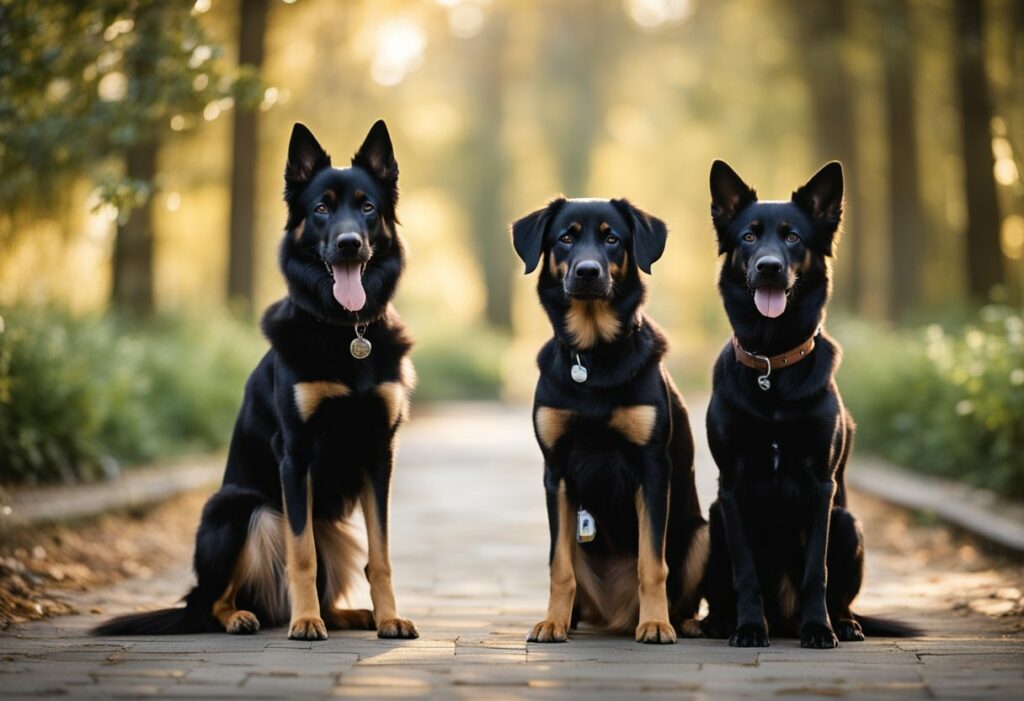Table of Contents
Dealing with aggressive behavior in dogs can be challenging and concerning for pet owners. Understanding the root causes and implementing effective strategies can help mitigate aggression and ensure a safer, more harmonious relationship with your pet. This guide provides effective strategies for addressing aggressive behavior in dogs.

1. Identify the Triggers: Addressing Aggressive Behavior in Dogs
The first step in addressing aggressive behavior is identifying the triggers. Observe your dog’s behavior to determine what provokes aggression, such as specific situations, people, or other animals.
- Tip: Keep a journal of your dog’s aggressive incidents to identify patterns and triggers. For more information, visit ASPCA.
2. Rule Out Medical Causes
A visit to the veterinarian is essential to rule out any medical issues that may be causing your dog’s aggression. Pain, illness, or discomfort can lead to aggressive behavior.
- Tip: Schedule a comprehensive veterinary check-up to identify and address any underlying health issues. For more advice, visit AVMA.
3. Provide Adequate Exercise and Mental Stimulation: Addressing Aggressive Behavior in Dogs
Lack of exercise and mental stimulation can contribute to aggression in dogs. Ensure your dog gets regular physical activity and engaging activities to burn off energy and reduce stress.
- Tip: Incorporate daily walks, playtime, and puzzle toys into your dog’s routine. For more tips, visit Cesar’s Way.
4. Socialize Your Dog
Proper socialization from a young age can prevent aggressive behavior. Expose your dog to various environments, people, and other animals in a controlled and positive manner.
- Tip: Enroll your dog in a puppy socialization class or arrange playdates with well-behaved dogs. For more information, visit PetMD.
5. Use Positive Reinforcement Training: Addressing Aggressive Behavior in Dogs
Positive reinforcement training involves rewarding desired behaviors to encourage repetition. This method can effectively reduce aggression by reinforcing calm and friendly behaviors.
- Tip: Use treats, praise, and affection to reward your dog for displaying non-aggressive behavior. For more advice, visit AKC.
6. Avoid Punishment
Punishing your dog for aggressive behavior can exacerbate the problem and lead to fear-based aggression. Focus on positive reinforcement and redirecting negative behavior instead.
- Tip: Use calm and firm commands to redirect your dog’s behavior without using physical punishment. For more information, visit PetMD.
7. Manage Your Dog’s Environment: Addressing Aggressive Behavior in Dogs
Managing your dog’s environment can help prevent aggressive incidents. Use baby gates, crates, or leashes to control your dog’s access to potential triggers.
- Tip: Create a safe space for your dog where they can retreat and feel secure. For more advice, visit Humane Society.
8. Seek Professional Help
If your dog’s aggression is severe or persists despite your efforts, seek help from a professional dog trainer or behaviorist. They can provide tailored strategies and support.
- Tip: Look for certified trainers or behaviorists with experience in dealing with aggression. For more information, visit CCPDT.
9. Desensitize and Countercondition: Addressing Aggressive Behavior in Dogs
Desensitization and counterconditioning involve gradually exposing your dog to the trigger in a controlled manner while rewarding calm behavior. This method can help change your dog’s response to the trigger.
- Tip: Work with a professional to develop a desensitization and counterconditioning plan. For more advice, visit The Spruce Pets.
10. Be Patient and Consistent
Addressing aggressive behavior in dogs requires time, patience, and consistency. Be persistent with your training and management strategies, and celebrate small successes along the way.
- Tip: Stay calm and composed, as your dog can pick up on your emotions. For more tips, visit Cesar’s Way.
Conclusion: Addressing Aggressive Behavior in Dogs
Effectively addressing aggressive behavior in dogs involves understanding the root causes, providing appropriate training and socialization, and managing their environment. By implementing these strategies and seeking professional help when necessary, you can foster a safer and more harmonious relationship with your dog. For more tips on pet care and behavior, visit our website.
Frequently Asked Questions about Addressing Aggressive Behavior in Dogs
What causes aggressive behavior in dogs?
Aggressive behavior in dogs can be caused by various factors, including fear, territoriality, possessiveness, pain, illness, or lack of socialization. Identifying the underlying cause is crucial for effective management. For more information, visit PetMD.
Can aggressive behavior in dogs be cured?
While aggressive behavior can often be managed and reduced, it may not be completely cured. Consistent training, behavior modification, and management strategies are essential for long-term success. For more advice, visit ASPCA.
When should I seek professional help for my dog’s aggression?
Seek professional help if your dog’s aggression is severe, persistent, or poses a danger to others. A certified dog trainer or behaviorist can provide specialized guidance and support. For more information, visit CCPDT.
Is punishment an effective way to address aggressive behavior in dogs?
Punishment is not an effective way to address aggression and can often make the behavior worse. Positive reinforcement and behavior modification techniques are more effective and humane. For more tips, visit PetMD.
How can I prevent my dog from becoming aggressive?
Prevent aggression by socializing your dog from a young age, providing regular exercise and mental stimulation, using positive reinforcement training, and avoiding situations that may trigger aggressive behavior. For more advice, visit AKC.











